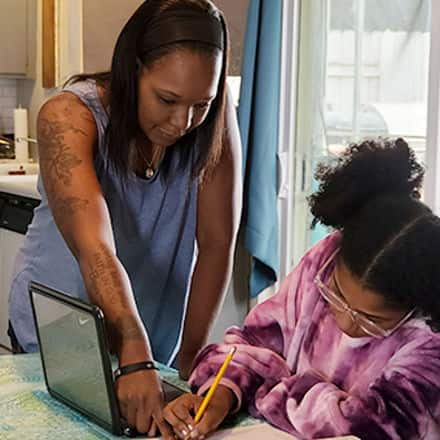How to Check How Many Credits You Have

College isn’t new to you. You already took some classes — or maybe many. But how many, exactly? And how many college credits did those classes earn you?
If you're enrolled in college, you may be counting down the credits until your graduation day. Or if you're planning to make a college comeback, you'll want to avoid repeating coursework. Either way, checking how many credits you have can help you gauge how long it'll take to finish your degree.
How Do I Know How Many Credits I Have in College?
To get a rough idea of how many credits you have, count the number of classes you’ve passed and multiply it by three. Courses are often worth three credits each — but not always.
Because there are exceptions to this three-credits-per-class formula, and you may not recall every class you’ve ever taken, you’ll want to seek an official credit count from the schools you’ve attended. Your best bet is to speak with your academic advisor or the school’s registrar’s office.
If you’re a current student, there may be a way to view your official credit count on your own. At Southern New Hampshire University (SNHU), for instance, you can access your program evaluation online at any time to see what credits you’ve completed, what you have in progress and what you still have left to do.
But, if you’re not currently enrolled in school and know you have completed credits floating around somewhere, you’ll want to get in touch with the schools you’ve previously attended. You may have to request a transcript — likely a necessary step if you’re interested in transferring those credits to another school and resuming your college journey.
What Are Transfer Credits?
Transfer credits are the credits you’ve already earned that can apply to another program. You’ll want to consider transfer credits if you are interested in one or more of the following:
- Returning to school to finish a degree
- Attending a different school
- Advancing from an associate degree or certificate program to a bachelor’s degree
- Moving from a graduate certificate to a master’s degree
If you can bring transfer credits into your new college or degree program, you won’t have as many credits left to complete, allowing you to finish your degree sooner.
 After losing her job in 2020, Mariel Embry ’22 knew it was time to examine her goals and determine her next steps. The five-year plan she developed included finishing her bachelor’s degree. And finding a college that accepted all the credits she earned at previous colleges was important to her.
After losing her job in 2020, Mariel Embry ’22 knew it was time to examine her goals and determine her next steps. The five-year plan she developed included finishing her bachelor’s degree. And finding a college that accepted all the credits she earned at previous colleges was important to her.
“For me to choose a college to go back to, it was a make-or-break deal for them to accept my credits because I had basically already done more than two years of college coursework,” she said. “And if the school that I was going to go to wasn't going to accept that, I didn't want to put in extra time that I'd already put in.”
After speaking with the admission team at SNHU, Embry felt it was likely that her credits would transfer. So, she applied for a free credit evaluation.
SNHU accepted credits from the four schools Embry attended over the years. That, plus cost, solidified her decision to transfer and complete a bachelor’s degree in creative writing. “I had over 60 credits accumulated, and SNHU took all of them, which really streamlined the process of me getting my degree,” she said.
Do Credits Only Come from Schools?
No, they don’t. Transfer credits aren’t only earned at colleges and universities. Depending on the school you plan to attend and the degree program that interests you, you could also receive credits for other experiences.

“We encourage anyone to send us transcripts for their test/work/life experiences, and we will review it to see if we can offer any credit towards their program,” said Brielle Amazeen, a transfer credit evaluation specialist at SNHU.
These types of experiences, for instance, can lead to college credits at SNHU:
- Certifications such as Amazon Web Services (AWS) and CompTIA
- Courses from Sophia Learning
- Military credits from service and exams
- Testing out via AP exams and CLEP exams
And the list goes on.
“We want to honor those experiences and award credit for their previous accomplishments if possible,” Amazeen said. “... We value the time the student spent as well as the skills they learned in these experiences.”
Reach out to the schools you’re considering to see if you’re eligible for transfer credits beyond those traditionally earned. You might find you can finish your degree for less time and money than you thought.
How Many Classes Are 60 Credits?
Assuming each class is three credits, 60 credits could equate to 20 classes. To put it into perspective, that’s the length of an associate degree program.
When Embry transferred to SNHU, she already had more than 60 credits completed at prior college experiences, positioning her halfway through her bachelor’s degree program when she began at SNHU. You typically need 120 credits to earn a bachelor’s degree, which consists of approximately 40 classes.
In addition to transferring academic credits, Embry took advantage of the credit-bearing experiences available to her and finished her degree at SNHU in about two years.
“I've even been able to test out of some of the classes,” she said, with the help of CLEP exams and Sophia Learning.
Do Transferred Credits Affect GPA?
No. It’s unlikely that your transferred credits will impact your GPA. “Every student will begin their program with a clean slate, and as they complete courses, their GPA will change accordingly,” Amazeen said.
That’s not to say those grades don’t matter. Most schools require transfer credits to meet certain grade requirements, so your grades could factor into the evaluation process. At SNHU, transfer credit evaluation specialists will consider credits from classes where you earned a C- or better.
How Does the Credit Transfer Work?

If you have credits you’d like to bring to a new college or university, you’ll want to search for a transfer-friendly school — one with a transfer policy that acknowledges and celebrates the work you’ve already completed.
Could you have up to 75% of your program done by the time you start at SNHU? Here's how you can find out:
- Complete the free 5-minute online application. There’s no obligation after filling it out.
- Get your transcripts requested — for free. Chat with an admission counselor, and we'll request your transcripts on your behalf.
- Receive your free evaluation. Soon after all your transcripts are in, you'll get your official evaluation. It will show you what was transferred in — and what classes you need to complete.
These are important steps to take when considering colleges, as each admission office may have different eligibility requirements for previously earned credits.
“During the evaluation process, we look at multiple areas to determine if courses can transfer in,” said Amazeen. She said the criteria her team considers include the following:
- Accreditation
- Grades
- Course alignment
- Time
The first two — accreditation and grades — determine if your credits will transfer. When you earned your credits, your school must have been either nationally or regionally accredited. If it was, your transfer credit evaluation specialist would review the grades you earned. Then, its credits can transfer if you have at least a C- in a course.
The second two — course alignment and time — determine how your credits will transfer. Through comparing course descriptions between your old school and your new one, a transfer credit evaluation specialist will see how your credits can fit into the program that interests you. For example, it may translate to one of your major requirements, or it could count toward your general education courses or free electives.
“We will transfer in all possible credits from previous education, even if it doesn’t relate to their desired program,” Amazeen said.
While college credits don’t expire, certain courses require up-to-date knowledge. If you have IT credits earned more than five years ago, for example, they can still transfer into your program; they may just fill a free elective slot instead of replacing a course required for students in your major.
Amazeen encourages you to note all your educational experiences during the admission process. “Even if you didn’t think you did well — or that your courses do not relate to your desired degree — any amount of transfer credit can help save you time and money in completing your degree,” she said.
A degree can change your life. Find the SNHU online program that can best help you meet your goals.
Rebecca LeBoeuf ’18 ’22G is a writer at Southern New Hampshire University. Connect with her on LinkedIn.
Explore more content like this article

College vs. University: What’s the Difference?

Is Getting a Second Bachelor’s Degree Worth It?

Picture an Online Degree at Your Own Pace
About Southern New Hampshire University

SNHU is a nonprofit, accredited university with a mission to make high-quality education more accessible and affordable for everyone.
Founded in 1932, and online since 1995, we’ve helped countless students reach their goals with flexible, career-focused programs. Our 300-acre campus in Manchester, NH is home to over 3,000 students, and we serve over 135,000 students online. Visit our about SNHU page to learn more about our mission, accreditations, leadership team, national recognitions and awards.


